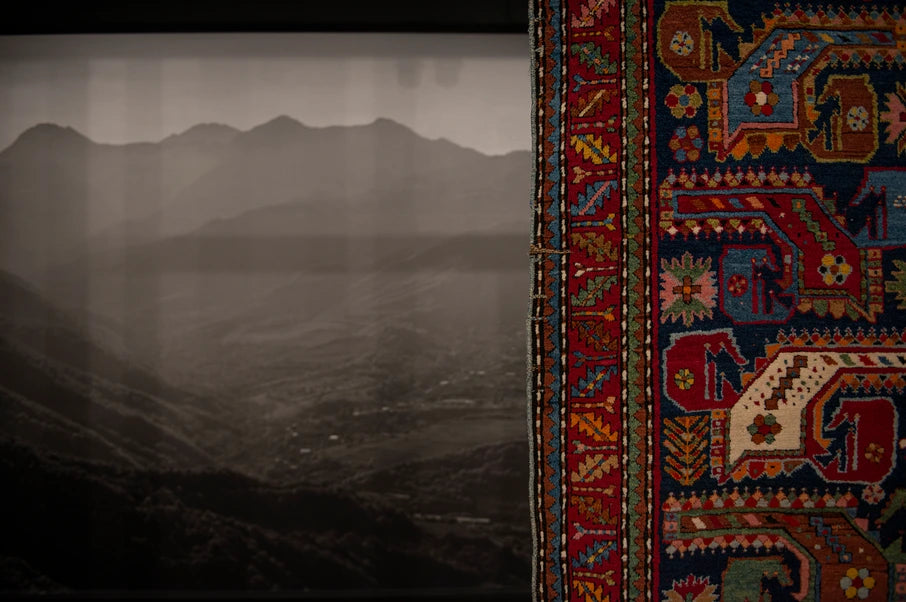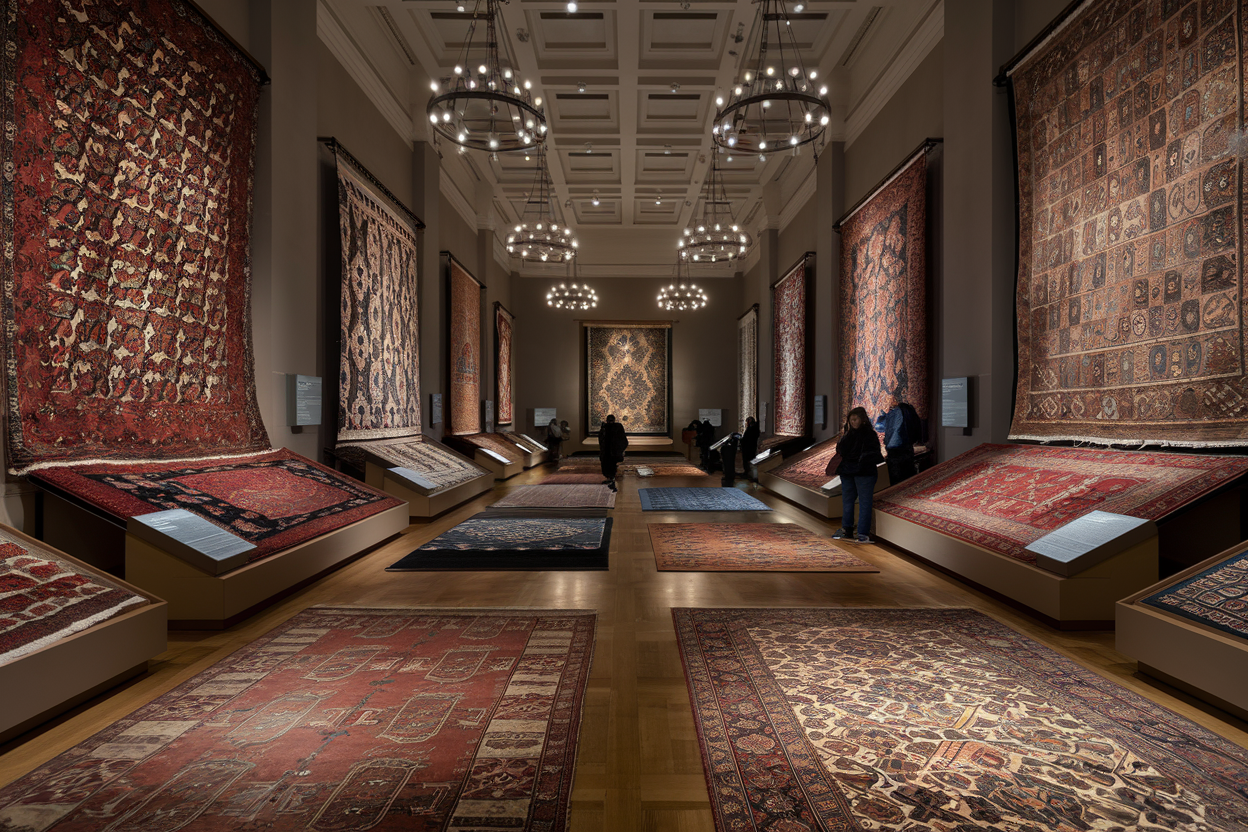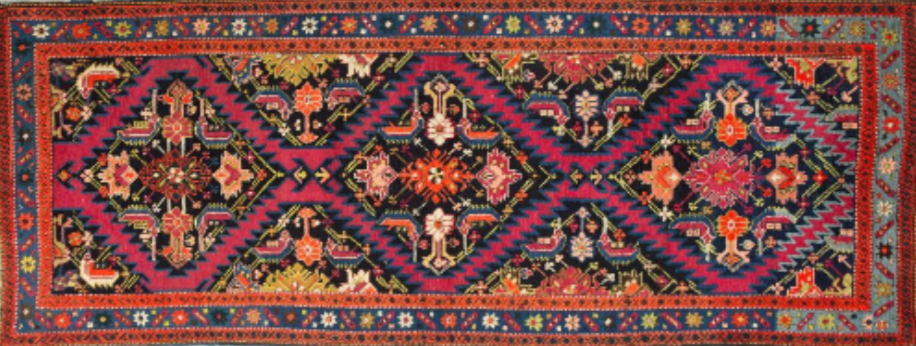It is one of the greatest riches of Armenia's impressive artisanal heritage. Cultivated since the era of its predecessor, Urartu, this skill has made Armenia's reputation over the centuries and is deeply rooted in the country's imagination for the symbolism it carries.
Although influenced by its Persian and Turkish neighbors and their cultural interactions, Armenian tapestry art is rich in its own unique symbolism. It also exhibits regional diversity, with the geographical or cultural context of each design site influencing the craftsmen's style.

The most famous of all are undoubtedly those originating from Artsakh, in the Nagorno-Karabakh region. They combine complex geographical forms intertwined with more concrete motifs. Animals, allegories of power and fertility; lions, birds... but also a good number of plant motifs, symbols of life and abundance, and all tinged with a palette of bright and powerful colors.
Highly sought after for their exceptional quality, they were often offered as ceremonial pieces.
© Exhibition “Voices from our collective past”


Traditionally used in Armenia for the creation of tapestry, very ancient horizontal and vertical looms, as well as a large number of tools, have been discovered thanks to archaeological work carried out in the region. Their operation was quite simple, but allowed for extreme precision in the creation of patterns.
Horizontal looms were used for small textile formats, sometimes used in tapestry. Composed of two parallel bars, between which the warp threads were stretched, it was completed with a shuttle which allowed the weft threads to be tightened.
Larger and with reverse operation, vertical looms allow for the production of large pieces of textiles, particularly carpets. Here, fixed bars or weights allow for vertical tension of the threads. Also composed of a shuttle, this is crossed horizontally by the warp threads to tighten the weft threads. It then allowed for much better tension of the threads, and offered the weaver much more practicality.

